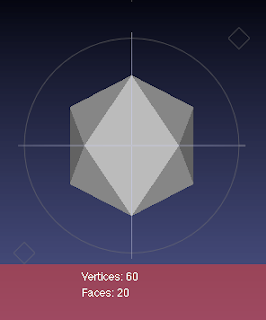- Per-vertex: each vertex stores a color. A triangular face can have vertexes of different color and inside a triangle the color is linearly interpolated. Color is smooth across the surface.
- Per face: each face has a distinct color. You can easily see the discontinuity of colors among the faces (no interpolation is usually done.
- As texture: the most general way that is reasonably decoupled from the mesh itself. You only need a good parametrization.
- per-vert -> per -face
- per-face -> per-vert
- texture -> per-vert
A fourth technique could be mentioned, keeping stuff per wedge, i.e. for each corner of the face we can store different colors (or other attributes), but this approach is rather unused (it can be simulated by duplicating vertices).
Below a few images showing the difference between the three modes on a small (40k tri) mesh; respectively: no color (to give you an idea of mesh density), color by texture, per vertex color, per face color.













